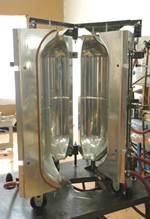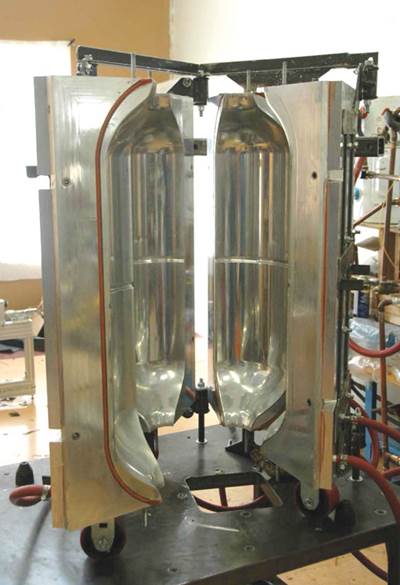The new carmakers
A host of new carmakers is using composites to build vehicles designed specifically to help us be less oil-dependent.
I was out driving the other day. My 13-year-old son was with me, and we were stopped at a light. As we waited for the signal to change, a large, red SUV drove past us. It had oversized tires, was customized with shiny chrome highlights and it dwarfed every vehicle around it. My son shook his head. “Man,” he said. “That looks ridiculous.”
“That?” I asked, pointing at the vehicle. “You know, not too long ago that would have been pretty cool.”
“Maybe, but not now,” he said. “It’s just too much.”
This exchange got me to wondering. First, is the sentiment expressed by my son — a person who, ostensibly, might be impressed by big and fast cars — more common than it used to be? If, as I suspect, it is, then why? The answer, I suppose, is obvious, and it started during the summer of 2008 when the price of gasoline in the U.S. soared above $4 per gallon. This, apparently, was the magical “tipping point” that got many of us to thinking more critically about the kind of vehicle we drive, its efficiency and its impact on our household expenses. Indeed, there are few things that affect widespread change in human behavior the way a radical change in expenses does, and 2008’s oil price spike got many of us to thinking and behaving very differently about what and how we drive.
Then, just as suddenly and mysteriously as the price increased, it went back down. Suddenly the nationwide fiscal imperative to upgrade to more efficient vehicles was gone. Theoretically we’d dodged the energy bullet and were back to normal.
The truth, as my son’s comment indicates, is that we aren’t really back to “normal,” because anxiety about the largely unexplained forces that drove up oil prices in the first place lurks in our collective subconscious. We all keep tucked in the back of our minds the variables that might trigger another price hike: A resurgent economy and resurgent demand, increased demand from developing countries, decreasing supply, OPEC’s penchant for price fixing, etc.
Layered on top of this scenario is the apparent devolution of the traditional American automotive industry. GM, Chrysler, and (to a lesser degree) Ford are busy remaking themselves and their products to cater to this uncertain energy landscape, developing electric vehicles.
Just as promising, though, is a host of new carmakers — many of them Progressive Automotive X PRIZE competitors — that have developed small, lightweight, fuel-efficient vehicles designed specifically to help us consumers be less oil-dependent. As a bonus, many of these vehicles make significant use of composites, including just-announced cars and trucks from Riversimple, Velozzi, Bright Automotive, Tesla, Fisker Automotive, APTERA and Boulder Electric Vehicle.
As proof of this trend, the SPE Automotive Composites Conference & Exhibition (held Sept. 15-16, in Troy, Mich.), featured keynotes by representatives from Tesla, Bright and Myers, among others. We departed for the ACCE conference just as this issue was put to bed, and we’re now busy preparing to report to you in the December issue about where we see composites headed in the automotive industry.
Related Content
How has CW changed in the last year?
Upon his one-year anniversary as editor-in-chief of CW, Scott Francis looks back at some of the brand’s changes and hints at where it might be heading next.
Read MoreA return to JEC World
CW editor-in-chief Scott Francis reflects on the ways in which the composites industry has changed and also stayed the same based on observations from this year’s JEC World.
Read MoreLooking at composites through the lens of U.S. history
When you’re a tourist with a background in writing for manufacturing it’s impossible not to notice all of the ways in which composites have resulted in significant milestones in the U.S. — historically and in the present.
Read MoreAchieving composites innovation through collaboration
Stephen Heinz, vice president of R&I for Syensqo delivered an inspirational keynote at SAMPE 2024, highlighting the significant role of composite materials in emerging technologies and encouraging broader collaboration within the manufacturing community.
Read MoreRead Next
Lessons from Spring Hill
General Motors and Chrysler were back in Washington, D.C., in mid-February, asking for more bail-out money.
Read MoreComposites fuel growth of fuel cell technology
Composite components in hydrogen fuel cell systems help handle higher heat and reduce stack size.
Read MoreUltrasonic welding for in-space manufacturing of CFRTP
Agile Ultrasonics and NASA trial robotic-compatible carbon fiber-reinforced thermoplastic ultrasonic welding technology for space structures.
Read More












